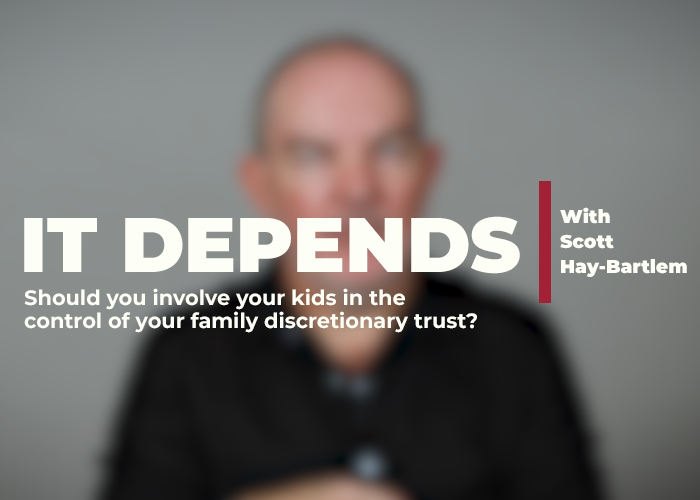On 3 June 2014, the Honourable Warren Truss, Minister for Infrastructure and Regional Development, presented to Parliament the report of the Aviation Safety Regulation Review.
The report can be accessed here.
The report praised the standing of Australia’s regulatory safety system noting that it was among the most widely respected in the world. However, despite this, the Review panel found a significant disconnect between the industry and the Civil Aviation Safety Authority (CASA) as the regulator, which, if left unchecked, could put both the safety and reputation of the industry at risk.
In view of this, the report makes 37 recommendations.
Ultimately, passengers who travel on regular public transport operations and those who engage in general aviation activities will be the winners. Arguably, CASA and the Australian Transport Safety Bureau (ATSB) will understandably feel that a lot is being asked of them, given that all but four of the 37 recommendations require some action on the part of CASA, the ATSB or both.
Extensive public consultation was conducted as part of the review process. Meetings were held with over 200 individuals. Approximately 269 formal submissions were received by the Review panel, about one third of which were provided on a confidential basis. The Review panel found that CASA’s hard line approach has distanced itself from the industry, contrary to the approach taken by many leading aviation regulators around the world.
Those foreign regulators adopt a performance based system with a focus on a ‘just culture’, and an approach that places more trust in the operators to carry out their activities in compliance with the applicable regulatory scheme. The regulator monitors and takes appropriate action on any breaches of that system. In comparison, many in the industry would argue CASA’s approach requires the operator to proactively prove that they have not done anything wrong.
The proponents of a performance based regulatory system argue that it supports a more open discourse between the regulator and the industry, leading to better safety outcomes and less intrusion on the day to day operations of the industry operators.
The report identifies the need for CASA to set a new strategic direction; one focussed on establishing a collaborative rather than an adversarial relationship with the industry. The addition of two extra directors to the CASA Board along with the upcoming vacancy of two positions provides CASA with the opportunity to create a leadership team with experience and skills across not only the aviation field, but also the fields of regulation and human factors.
One of the recommendations that will be most welcomed by the industry is that CASA attempt to realign its organisation with the industry, taking such steps as re-establishing offices at major airports and engaging in an industry exchange program to allow its staff to gain a better appreciation of the day-to-day issues faced by those at the coal face.
Other steps, such as the devolution of medical renewals to designated aviation medical examiners and the adoption of public service key performance indicators for CASA staff, will also arguably assist in promoting a regulator that is more understanding of the industry’s activities.
The ATSB has faced significant criticism following its report into the 2009 ditching of a Pel-Air Westwind off Norfolk Island. The Review acknowledged that the Pel-Air report was considered an aberration when compared with the usual standard of the ATSB’s investigations, and that measures had been put in place to ensure that it was not repeated.
Canada’s Transportation Safety Board is currently completing a review of the ATSB, and will provide its report shortly. However, the report recommends that the ATSB appoint an additional commissioner with specific expertise in aviation, a measure that those in the industry will no doubt agree will assist in the investigations into and reports of the highly complex and technical accidents.
Other recommendations that will be welcome by industry include that CASA:
- change the current two-tier regulatory framework, consisting of the Act¹ and Regulations², to a three-tier structure, with the new third tier comprised of Standards drafted in plain language, and the Regulations drafted in a succinct style, containing provisions for enabling standards and other necessary provisions such as the high-level offence and penalty provisions;
- review all existing Parts of the Regulations, in consultation with the industry, to determine if they should be redrafted in the three-tier structure;
- use third party commercial audits as a means of supplementing its surveillance program, to better identify and target rogue operators;
- utilise the memorandum of understanding with ATSB to accredit CASA observers to ATSB investigations;
- delegate its responsibility for the day-to-day operational management of air space to Air Services Australia, including the designation of air routes and temporary changes to the classification of air space for operational reasons;
- continue to provide appropriate indemnity to all industry personnel with delegations of authority, such as chief flight examiners;
- demonstrate a philosophy of just culture in which individuals involved in reportable events are not punished for actions, omissions or decisions made by them that are commensurate with their experience and training, but in which actions of gross negligence or wilful violations are not tolerated;
- reintroduce a discretionary procedure that allows operators or individuals the opportunity to discuss with CASA and, if necessary, remedy a perceived breach prior to CASA taking an informal action, save where CASA identifies a serious and imminent risk to air safety;
- change its organisational structure to a client oriented model;
- introduce grading of non-compliance notices on a scale of seriousness; and
- reassess the penalties under the Regulations.
The report is open for public comment until 30 June 2014.
It will be a difficult time ahead. Aviation regulatory reform in Australian has been ongoing for over two decades and has changed direction numerous times. This has left many reform fatigued, disillusioned and disgruntled. The Review panel asks those involved in the industry, CASA, the ATSB and the government to leave the past in the past and work together to improve Australia’s aviation safety system for the future.
If you have any questions regarding this alert or the report, please contact Kevin Bartlett or Andrew Mansfield.
¹ Civil Aviation Act 1988 (Cth).
² Civil Aviation Regulations 1988 (Cth), Civil Aviation Safety Regulations 1998 (Cth)



